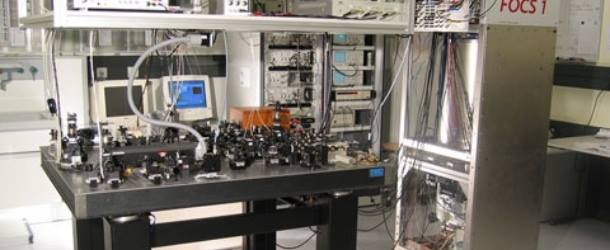Researchers Believe Cesium Quantum States Used by an Atomic Clock Could Also Be Used By a Quantum Computer

(IEEESpectrum) The neutral-atom quantum computer, proposed by numerous researchers around the world, uses a cesium atom in a laser trap (the gold standard of precision timekeeping) as the quantum bit on which the compute engine is based. “There’s no quantum-mechanical system we understand better than an atom,” says David Weiss, a professor of physics at Penn State.
Atomic clocks use a well-studied characteristic of these ultracooled and stabilized atoms as the basis for a tick to mark the passage of time. Called the hyperfine split, it involves the spin of each atom’s outermost electron. (One second is universally defined today as 9,192,631,770 periods of the radiation given off from the hyperfine split in cesium.) For a quantum computer, the idea is to use the same set of cesium quantum states used by an atomic clock.
Dana Anderson, CEO of Boulder, Colo.–based ColdQuanta, now that individual atoms can be reliably stabilized and cooled to below 100 nanokelvins, much of the fundamental science is in place. “Once you can get atoms down that cold, we have line of sight to a lot of quantum technologies,” Anderson says. “Whether we’re doing a quantum clock or quantum computing, it’s the same stuff that goes inside.”



















